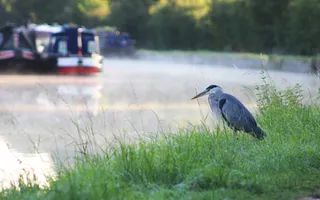For many creatures that rely on both water and land, there's no beating a canalside location. Learn more about the six key habitats found along our waterway network, and which species call them home.
Canal habitats
Our 2,000 miles of canals and rivers provide habitats for all kinds of plants and wildlife.
Discover more
Last Edited: 31 March 2025


Stay connected
Sign up to our newsletter and discover how we protect canals and help nature thrive










